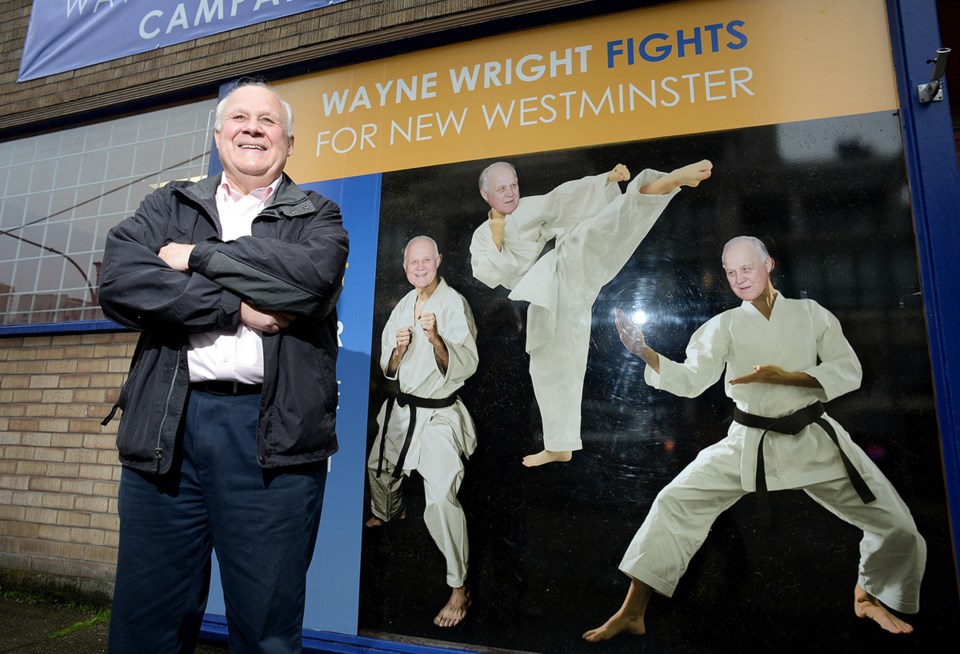Election signs in commercial buildings and cars could be banned if changes to the city’s sign bylaw are approved.
Council recently directed staff to bring forward a bylaw that will amend the city’s sign bylaw, which would apply to election signs for federal, provincial and local elections. The city is proposing changes to the use of car signs and window signs and reductions to the size of lawn signs.
The current bylaw states election signs shall not exceed three square metres in size. It’s being proposed election signs could have up to two sides and have an area no greater than 0.61 metres by 0.61 metres (two feet by two feet) on each side.
“Staff would like to also address window signs,” said a staff report. “An excess of signs in windows can create a safety issue for workers inside the building or office and also prevent people from seeing inside the premises.”
It’s proposed that window signs be allowed as long as the total area of the signs (including all copy, logos, graphics, images and decorative borders) not exceed 20% of the area of the window and glazed areas of doors along street frontages of a building or business unit.
“The sign bylaw only addresses commercial windows,” said city clerk Jacque Killawee. “If it is your home, you can put whatever you want in your window. It’s just for commercial properties. That is the intent of that.”
Car signs could be a no-no in future election campaigns in New Westminster.
“Signs on vehicles can be a distraction to drivers, pedestrians and street users in general,” said a staff report. “As well, Elections BC prohibits election signs within 100 metres of a voting place during voting. A vehicle with an election sign on it may inadvertently be parked or driven to within 100 metres of a voting place and therefore be in violation of the Elections BC requirement. Monitoring this is time-consuming and would require extra staff to patrol the area around voting places so that vehicles can be removed by their drivers, or the signs covered up.”
Coun. Chuck Puchmayr supports sending the proposed sign bylaw amendments out to public consultation but has concerns about what’s being proposed. He said the odd candidate may put a sign on their vehicle during an election, but it’s not really an issue.
“I don’t support the concern about safety,” he said. “We have signs on our buses. We sell advertising on our buses. We have signs on the side of trucks. I don’t think because there is advertising there that it’s distracting. I think that piece is a little bit overreaching.”
Car wraps featuring election-related signage would also be covered by the ban.
Puchmayr also expressed concern about the proposal to require the height of the sign above the ground not to exceed 1.1 metres (3.5 feet), saying it could be problematic for homeowners whose homes have hedges.
“They still want a sign. They still want to tell their neighbours this is who they support,” he said. “They would definitely have to exceed that three-and-a-half-feet piece in order to do that.”
On the topic of sustainability, a staff report stated many election signs are reused year after year but eventually need to be disposed of if they’re too damaged or the candidates don’t seek re-election.
“Depending on what the signs are made of, they may or may not be recyclable,” said the report. “Reducing the size of signs will likely result in less waste going to the landfill or requiring recycling.”
Puchmayr isn’t convinced that smaller lawn signs are better for the environment.
“The large signs, in my experience, they seem to last a lot longer,” he said. “Especially if you are using the small bag signs, those rarely get to a second election.”
While the next civic election won’t take place until Oct. 15, 2022, Puchmayr said it’s possible there will be provincial and federal elections before then – and candidates may already be planning to repurpose signs they’ve purchased for prior campaigns.
“I think that this report overreaches a bit, in my opinion,” he said.
Once council has given the bylaw amendment first reading, legislative services staff will advertise this proposed bylaw change and seek comments on the proposed changes from all candidates who ran in the 2018 municipal election and from all of the federal and provincial political parties that are active in New Westminster.
According to Killawaee, those comments will be presented for council’s consideration when the bylaw is given second and third reading.
“There will not be an opportunity to be heard on this bylaw but there will be an extensive public input period where the public can provide written input on the change in the bylaw before council passed second and third reading,” she said in an email to the Record. “By doing the consultation between first and second reading it allows council to send it back for amendments before moving the bylaw forward for implementation. This level of input is unusual for bylaws that do not require a public hearing or opportunity to be heard, which normally passed without further public input once proposed by staff.”



